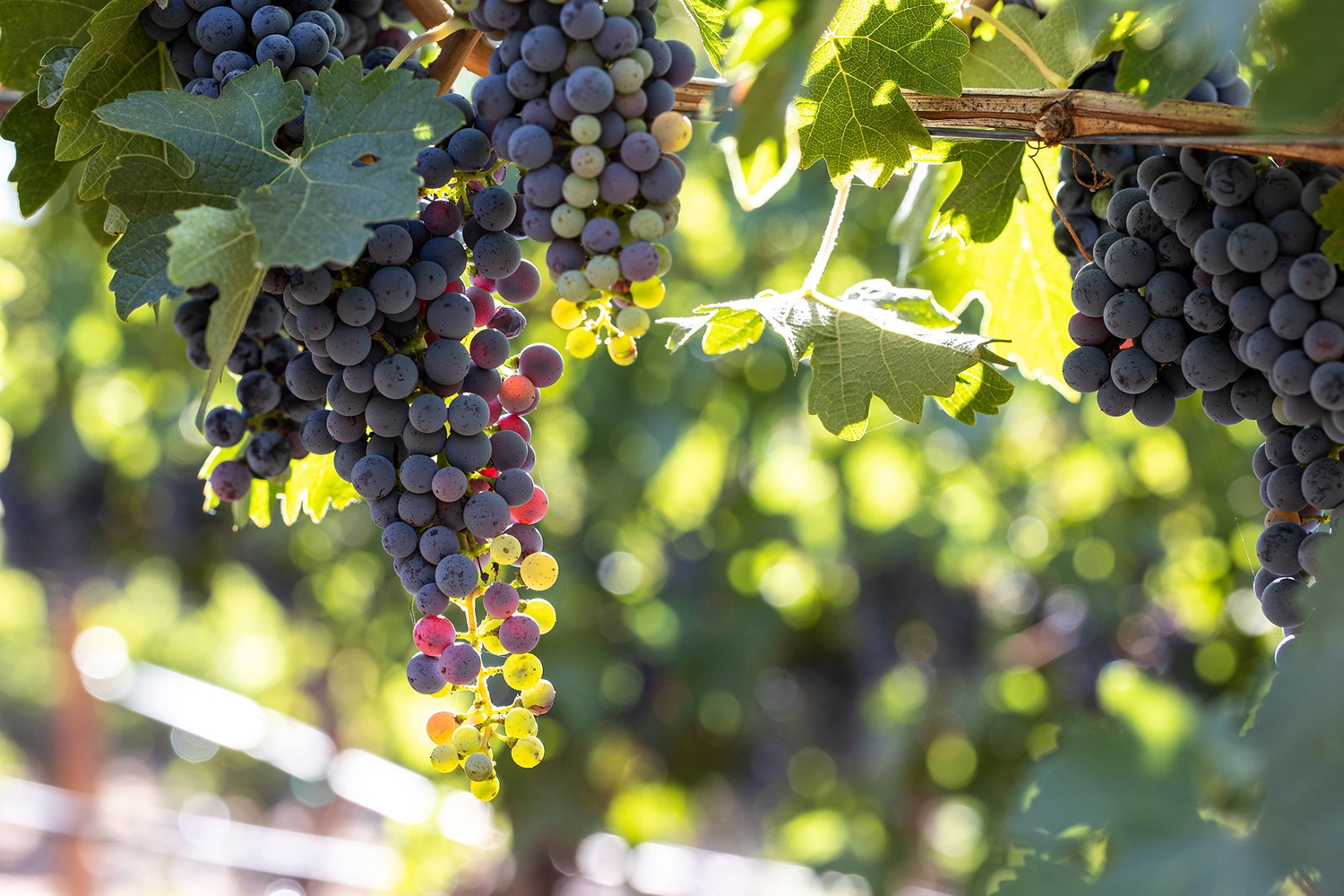Summer is an incredible time to visit Napa Valley as the grapevines are in full force and the energy of the upcoming harvest can be felt around the valley. As the summer season heats up, the beautifully manicured rows of vines seem greener than ever against the dusty landscape of the valley. Between June and August, the vines undergo tremendous growth as this is their final push of maturation before harvest. In just a few short months the vines go from newly formed buds to thick and vigorous grapevines. Within those grapevines, the most exciting time in the lifecycle of the vine is taking place, the onset of fruit.

Fruit Set
The first signs of summer in the Napa Valley happen in the vineyard. Fruit set is the process of the grapevine flower forming a berry. While a grape cluster will contain hundreds of flowers, only a portion of those will eventually become grapes berries due to environmental factors such as wind and rain. This process is needed to assure each berry will have enough space and nutrients to grow. Many viticulturists call this “self-thinning” as the vines regulate their own crop size. Fruit set happens once this period has ended. As exciting as it is to finally see little berries after months of dormancy, it can be stressful because fruit set is the first determining factor in how successful the growing season will be.

Canopy Management
With summer being the season in which the vines undergo the most growth, upkeep of the vineyard is paramount. This practice is called Canopy Management. Canopy Management is important because it improves the quality of the fruit, reduces the risk for disease, and optimizes vineyard manageability. These are some of the methods our vineyard crews use to maintain a healthy canopy:
Suckering: After bud break, when the weather warms up, shoots quickly begin to sprout out of the dormant vine. Suckering is the process of removing the overgrowth of shoots when there are more than the desired number of buds per node or the removal of shoots that are located on the truck of the vine. In turn, this will provide more nutrients to the remaining shoots and provide better fruit quality.
Shoot Positioning: A critical part of canopy management involves our vineyard crews training the vines in an upward direction. This technique is preformed using wire, ties, and the balance of other vines to improve the canopy configuration and ensure the grapes below have enough space and sunlight to grow. Shoot positioning is often done multiple times throughout the growing season as vines can grow an average of an inch per day.
Leaf and Lateral Removal: Grapevines that have more vigorous canopies, such as cabernet sauvignon require leaf and lateral removal. This process requires our vineyard team to go vine by vine and remove excess leaves to provide enough sunlight and space for the grapes to develop properly. It requires a skilled vineyard crew as too many removed leaves can result in sunburnt grapes. The ideal leaf to vine ratio is about 20 leaves per vine.

Veraison
In Mid-July one of Mother Nature’s most extraordinary events occurs, veraison. Veraison is the onset of ripening, when grapes turn from hard, green berries to soft, purple berries and begin to sweeten. As the skin of the berry changes color, the inside also develops; the tannins and acidity levels decrease, and the sugar levels increase. The grape berries increasingly become more viable for consumption. Eventually, around forty to sixty days after veraison, our Winemaker, Todd Graff will decide that the tannins, acidity, and sugar levels are at the ideal point for harvest. A multicolored vineyard means harvest is on the horizon!
Next Up: Harvest
The most exciting time at the winery is only a few months away! Harvest is the culmination of the growing season. It is when we truly see how all the hard work in the vineyard has paid off. Follow @frankfamilyvineyards on Instagram to see the vineyard mature before harvest!










